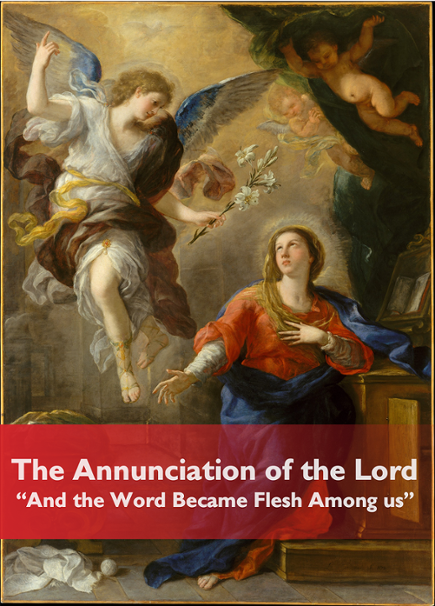Annual Celebrations
Feast Days and Marian Feast Days
How come Mary has so many feast days and different names?
Feast days (and solemnities and memorials) are days in the liturgical calendar where the Church highlights and honors an aspect of the Lord, of Mary, or of a particular saint. The Marian days usually fall into different categories. Some of them commemorate a particular event in Scripture, such as the Annunciation or the Visitation. Others highlight various apparitions, such as the feast of Our Lady of Guadalupe or Our Lady of Fatima. Still others relate to dogmatic statements about Mary, such as the Solemnity of the Assumption, or the Solemnity of Mary, Mother of God. Other Feast days are based on popular Marian devotions (Our Lady of the Rosary, etc.). Similarly, the many different titles of Mary acknowledge the breadth of her experiences and influence. Some of her titles relate to her life as the mother of Jesus (Theotokos, or "God-bearer," or Our Lady of Sorrows). Other titles are geographic, commemorating her apparitions in certain places (Our Lady of Lourdes, etc.) Some of her names relate to the Catholic belief that she continues to pray for us and four our needs (Advocate, Comforter of the Afflicted). There are also many names that center on imagery and symbolism (one very beautiful name is Star of the Sea, indicating that Mary can help us orient ourselves towards Christ).

Welcome Mass (Fall semester)
The Welcome Mass is the first Mass of the academic year. It is not only a beautiful celebration welcoming students and their families back to campus, but also when we offer a special blessing upon our students, faculty, administrators, and staff as they prepare to begin the semester. It is also an opportunity to welcome our newest Cardinals and their loved ones to the University of the Incarnate Word family as they begin this new and exciting chapter in their lives.
The Welcome Mass is traditionally held the Sunday before classes begin in the Fall semester.
Mass of the Holy Spirit (Fall semester)
In keeping with a long tradition dating from the founding of the great European universities in the Middle Ages, the University of the Incarnate Word celebrates the Mass of the Holy Spirit at the start of each Fall semester. We gather as a university community - students, faculty, administrators, and staff - and confidently call upon the Lord to send us the Spirit of Wisdom to infuse our educational work with the fire of love, asking for inspiration, guidance, and presence of God's Spirit on all of our campus activities as we begin the new academic year. “Come, Holy Spirit, renew the face of the earth!
Feast of the Immaculate Conception (Dec. 8)
“Hail, full of grace.”
The greeting of the Angel Gabriel to Mary is beautiful and simple. It asserts that Mary “had been made Grace” — had been given the Life of God in preparation for the wondrous event of the Son of God becoming one of us. Later in the Gospel story we learn that Mary acknowledges this gift with her response, “Be it done according to your word.” Mary’s saying “yes” is crucial; it makes the gift bloom.
We, too, have received the gift of the Life of God at Baptism. And we, too, have the power to respond, to make that gift bloom in our lives. We do so when we respond to the needs of others.
The apparition of the Virgin of Guadalupe to Juan Diego (Dec. 12)
On December 12, the Church celebrates the apparition of Mary to Juan Diego in 1531 in central Mexico. Mary asked that Juan Diego relate to the bishop of Mexico City her request that a temple be built reflecting her lasting concern for everyone. When Mary spoke to Juan Diego, she addressed him as "Juanito" (Johnny) in the tender way a mother would her son.
Anticipating the bishop’s disbelief, Juan Diego asked "the beautiful lady" to send someone else, but Mary insisted that he was the best person for this mission. When Juan Diego also explained that he had other worries, Mary assured him she was there to help him, saying "Am I not your mother?" In the end, Juan Diego overcame his difficulties and Mary left her image on his tilma as proof of her continued assistance in his and our needs.
Solemnity of the Annunciation (Incarnate Word Day)
March 25 - This is the Feast of the Annunciation. This is the Feast day for the Sisters of Charity of the Incarnate Word, The Founders of the University of the Incarnate Word. Learn more about the Sisters of Charity of the Incarnate Word here.
History
Originally a feast of our Lord, but now celebrated as a Marian feast, the feast of the Annunciation dates back at least to the fifth century, and the date of the feast, which is determined by the date of Christmas, was set at March by the seventh century.
The Annunciation, as much as or even more so than Christmas, represents Christ's Incarnation. When Mary signaled to Gabriel her acceptance of God's Will, Christ was conceived in her womb through the power of the Holy Spirit. While most of the Fathers of the Church say that Mary's fiat was essential to God's plan of salvation, God foresaw Mary's acceptance of His Will from all eternity.
The narrative of the Annunciation testifies powerfully to the truth of the Catholic tradition that Mary was indeed a virgin when Christ was conceived, but also that she intended to remain one perpetually. Mary's response to Gabriel - "How shall this be done, because I know not man?" (Luke 1:34) was universally interpreted by the Fathers of the Church as a statement of the Mary's resolution to remain a virgin forever.